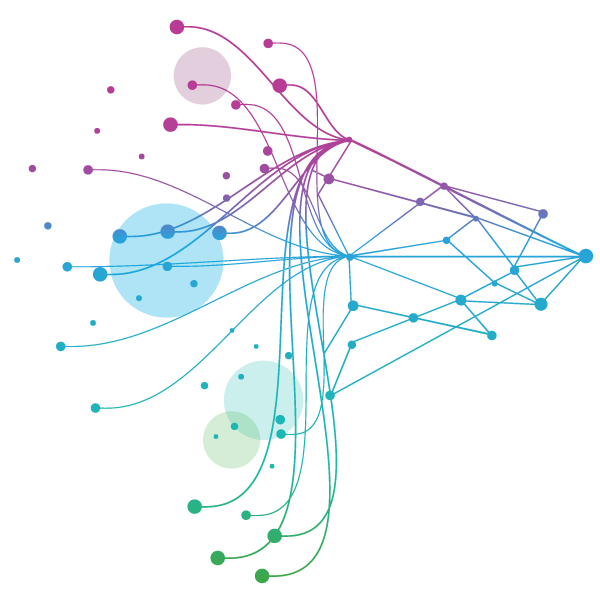From manufacturing oversight to regulatory requirements, manage quality across your organization with a single enterprise software solution.






















- Blogs
- The Future of MedTech Compliance: How Dynamic Data Is Transforming Regulatory Processes
As medical technology (MedTech) innovation continues to accelerate, quality and regulatory processes struggle to keep up. The traditional static data management approaches that have been relied on for decades are simply not cutting it anymore, especially when regulatory requirements seem to change daily and the stakes for both patients and businesses could not be higher.
In the five years from 2020 to 2024, we have witnessed an unrelenting surge in regulatory updates across the global MedTech landscape. As shown in Figure 1 below, we have seen over 15 landmark regulations, more than 60 major guidelines, about 100 technical amendments, and at least 20 global and regional harmonization alignments sweep through the industry.


Major markets like the US, the EU and Japan have undergone complete regulatory overhauls, while emerging markets like India and Brazil are revamping their entire frameworks to align with global standards. Anyone working in Quality and Regulatory Affairs (QARA) feels this pressure every day —it affects everything from development timelines to costs and ultimately determines whether patients get access to life-changing technologies.
Static Data’s Limitations Revealed
Traditional regulatory approaches often operate in "maintenance mode," prioritizing documentation updates and reacting to changes after they occur. This creates serious challenges, the main one being that manual updates simply cannot keep pace with real-world regulatory changes, leaving teams working with outdated information. Critical data remains trapped in disconnected spreadsheets and platforms, creating frustrating silos that prevent holistic decision-making. Teams find themselves scrambling to address issues instead of anticipating them, stuck in a reactive cycle. And let us not forget the sheer resource burden. Maintaining static data consumes enormous amounts of time and effort from skilled professionals who could be adding strategic value elsewhere.
These limitations are not just inefficient — they create real compliance risks and can delay market access for life-saving technologies. Teams may miss critical regulatory changes, waste weeks reconciling conflicting data from different systems and scramble to recover from preventable compliance issues. There's a human cost to these inefficiencies that goes beyond mere dollars and cents.
The Power of Dynamic Regulatory Data
Transitioning to dynamic data systems that evolve with regulatory, clinical and market conditions offers a much-needed solution. Unlike static approaches, dynamic systems prioritize actionability over mere archiving, drawing real-time information directly from regulatory agencies and standards bodies.
This shift enables a whole new way of working…
Imagine having unified views of submissions and approvals across all your markets, significantly reducing redundancy and optimizing costs for global launches.
- Global Dashboards for Regulatory Launches: Unified views of submissions, approvals and compliance status across the US, EU, Japan and emerging markets driven by regional strategic recommendations and timelines to reduce redundancy and optimize global launch costs. Direct benefits on global cost savings and FTR (First time right).
Picture receiving immediate analysis of how regulatory changes affect your processes, products, registrations and documentation through automated impact assessments.
- Automated alert screening, impact assessments and consumption: For policy, standards or regulation changes (e.g. FDA’s Digital Health Pre-Cert Program, EU MDR revisions) — driving impact assessments on the four key elements in the QARA system: 1) Process; 2) Product; 3) Registrations; and 4) Documents. Reduction in person-hours and time to response by strategizing applicable impacts.
Think about how much more responsive your post-market surveillance could be with aggregated adverse event reporting, improved traceability and faster response times.
- Post-Market Surveillance Streams: Aggregated adverse event reports, patient feedback and performance metrics driving complaint handling and mitigation strategies. Solid traceability, detailed audits and extensive reporting and management. Increased accuracy and response times as needed in the specific market.
And consider the power of AI-driven risk assessments that can help you preempt issues before they become problems.
- Predictive Analytics: AI-driven risk assessments of supply chain disruptions, audit outcomes or competitor recalls — preempting commercial planning and optimizing marketing strategies. Yielding preemptive actions that reduce downstream burdens both in terms of activities and costs.
The QARA AI Agent Approach
Implementing dynamic data requires a strategic framework and a QARA AI Agent can serve as the cornerstone of this transformation.
The framework consists of four key steps, starting with live data harvesting, which includes:
1. Actively searching and interpreting the most current regulatory updates from trusted sources like the FDA, European Medicines Agency (EMA) and Pharmaceuticals and Medical Devices Agency (PMDA), refining search accuracy through feedback loops and providing actionable insights.
2. Second, intelligent extraction frameworks that translate this dynamic reference data into practical downstream processes with human verification.
3. Third, predictive compliance models that leverage historical submission data and industry best practices to optimize regulatory strategies, forecast risks and preempt compliance gaps.
4. Finally, flexible workflows that adapt to changing requirements and commercial decisions through continuous assessment and validation.
Let us consider a concrete example. When planning a global launch for a Class 2 medical device in the US, EU and Japan, the QARA AI Agent does not just spit out a standard report. It provides tailored country-specific requirements, insightful comparative summaries and strategic recommendations that consider specific product characteristics. And the most beautiful part? It is all based on regulatory information that was current as of this morning, not last quarter when someone last updated the spreadsheet.
Challenges and Considerations
While the benefits of integrating QARA AI agents into regulatory compliance are clear, several interconnected challenges require strategic solutions. The dynamic and fragmented regulatory landscape presents difficulties, as regulations vary by jurisdiction and constantly evolve, requiring real-time adaptation and multilingual capabilities. Organizations must navigate conflicting regulations across regions while maintaining operational continuity, potentially using Retrieval-Augmented Generation (RAG) models for navigating specific regulatory websites.
Data security concerns are another significant concern, as recommendation systems may not fully protect sensitive information, exposing organizations to legal penalties if breached. Moreover, AI models trained on incomplete or biased datasets risk perpetuating unfair practices, making high-quality data essential. Embedded vector databases within enterprise solutions could help limit data exposure while feeding large language model (LLM) interfaces.
Accuracy and reliability issues also present major concerns, particularly around accountability for AI errors, including model hallucinations. Over-reliance on automation can lead to false positives, that waste resources, or false negatives that miss violations, necessitating regular validation and human oversight to maintain trust. Additionally, the "black box" nature of advanced AI models complicates regulatory audits that require clear decision trails. Implementing interpretable models or explainable AI frameworks with human oversight at multiple touchpoints could reduce opacity while retaining efficiency.
Cultural skepticism and limited AI literacy among compliance teams can further hinder implementation, suggesting the need for training and phased rollouts. As regulations continue to evolve, AI models require periodic retraining and auditing, ideally supported by automated monitoring tools that help capture current data under proper supervision.
Finally, emerging AI-specific regulations, particularly in healthcare, introduce additional compliance layers. Organizations must now track both industry-specific and AI-related mandates, potentially making it more practical to use specialized providers rather than maintaining in-house AI agents.
Regulatory Agility as a Competitive Advantage
Organizations that successfully implement dynamic data systems stand to gain significant competitive advantages. They will enhance patient safety and device efficacy — the ultimate goal for all of us in this industry. They will reduce time-to-market through anticipatory planning that eliminates surprises. They will also lower recall risks through predictive maintenance that catches issues before they affect patients. And finally, they will improve global market access with first-time-right submissions that save time, money and frustration.
Conclusion
The medical device industry stands at a critical juncture. The question is no longer whether to adopt dynamic data strategies, but how quickly organizations can implement them. As regulatory bodies increasingly emphasize "real-world data" ecosystems in their own operations, QARA teams must follow suit or risk falling behind. The future belongs to those who can make this mental shift — to view regulatory data not as a static artifact to be filed away, but as a living asset that drives innovation, compliance, and ultimately, patient safety. The companies that embrace this change will not only survive the regulatory avalanche but will thrive because of their ability to navigate it with confidence and agility.
Related solutions
Outdated compliance practices aren't viable amid evolving market and regulatory changes. IQVIA’s award-winning, end-to-end quality management system streamlines the product value chain, accelerates market entry, safeguards companies and patient safety, and meets complex regulatory demands.
Discover how an end-to-end eQMS solution empowers QARA professionals to remain agile, well-informed, and proactive in ensuring the safety and efficacy of medical devices.





